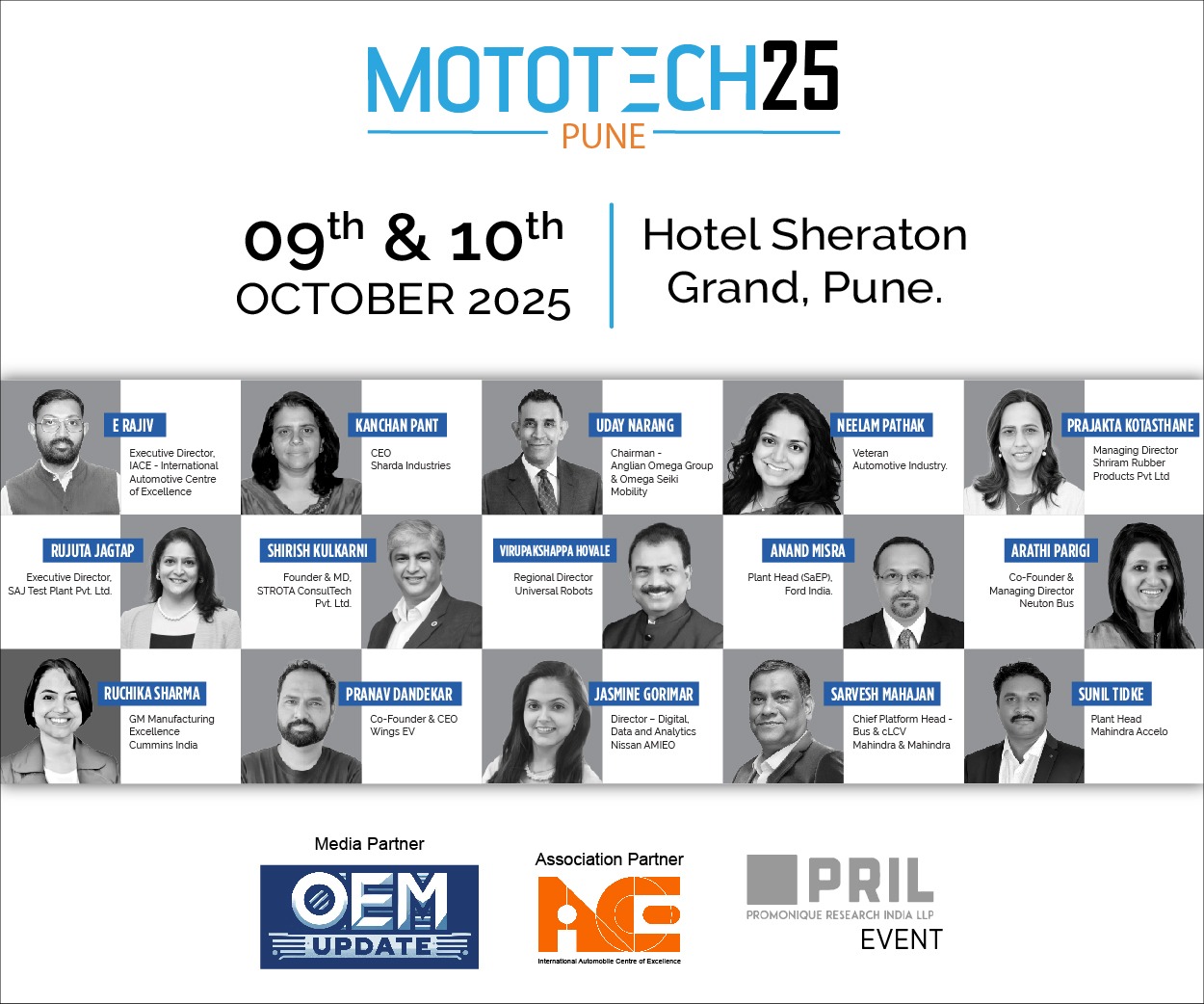Make in India: Has the lion marked its territory?
By OEM Update Editorial June 18, 2019 2:19 pm IST
‘Make in India’ was said to be the dawn of ‘New India’. But what exactly has it done for the Indian industries? ‘The Cover Story discusses the point of view of industry experts from different verticals of India about what they think are the success and disappointments of ‘Make in India’
‘Come, make in India’, a sentiment echoed by millions of people, thousands of industries to see India and its economy turn into the hub of manufacturing global goods. The ‘lion step’ launched in 2014 has come a long way. Though we have many positive responses coming in there still remains a glaring problem whether ‘Make in India’ will attain the success of ‘Made in China’. ‘Make in India’, however, still is the pioneering national program to promote investment, innovation, skills development and protect intellectual property and build a top-class manufacturing ecosystem in the country.
Machine tools
The Government of India launched the ‘Make in India’ initiative to encourage multinational and domestic companies to manufacture their products in India. The initiative aims to raise the contribution of manufacturing sector to 25 per cent of India’s GDP by the year 2022.V Anbu, Secretary, Director General & CEO, IMTMA says, “The initiative has given manufacturing sector a certain direction and promoted the ease of doing business.” With India aspiring to reach the $5 trillion economy club in the near future, ‘Make in India’ is seen as a favourable medium.
‘Make in India’ – created a platform and definitely helped bring pride into manufacturing which was hitherto absent. It helped consolidate the manufacturing sectors with better alignment. T K Ramesh, MD and CEO, Micromatic Machine Tools says, “It has temporarily slowed some manufacturing companies becoming traders of Chinese manufactured goods.
Companies from all across the world are now investing more in India and manufacturing their products here. Most recently, around 200 US companies, including Cisco, decided to move their manufacturing units from China to India. Jayant Joshi, Managing Director, RUJ & SRM Mechanics Pvt. Ltd says, “The campaign also gives a boost to start-ups, so the industry is set to see some creative and fresh ideas from youngsters who have a unique and modern approach to everything.”
Automotive
While the ‘Make in India’ initiative intends to revive India’s manufacturing industry in particular, it considers automotive industry as one of the most prominent actionable areas out of the 25 priority sectors. ‘Make in India’ endeavours to boost domestic automotive manufacturing and attract maximum foreign direct investments (FDIs). At present, the industry is 100 per cent open to FDIs – without the mandate of pre-approval from Indian Government.
Sharvari Rale, Market Research Writer, Fact.MR says, “In my opinion, this is resulting in increasing investments in the auto sector from overseas and will play an instrumental role in solidifying India’s position as a strong and genuine heavyweight in the automotive universe.” Automotive industry holds massive potential when it comes to generating employment. However, at the same time, the role of a multitude of strong domestic and geopolitical forces will also be crucial, in the forthcoming years.
‘Make in India’ initiative has bolstered auto-comp growth with ease-of-doing-business (EDB) approach during the last five years. Rajnikant Behera, Executive Director, RSB Transmissions (I) Ltd. says, “The FAME–India Scheme has led to a continuous increase in registered OEMs and vehicle models.”
Synchronising west with east throug hi-ways, fostering of innovation, incentivising investment, protection of intellectual property and building best-in-class manufacturing infrastructure, are positives that made Indian manufacturers to bolster industrial growth.Renewed thrust given to e-mobility in public transport has seen number of e-vehicles plying on the road, and reducing dependence on fossil fuels.
Automation
It is necessary for India to be the market leader in the industrial environment and automation to sustain itself in this competitive world. The combination of Make in India and Skill Development program boosting our manufacturing quality standard many folds and attracting foreign investors to invest more in India, since they are getting both skill and market under one roof.Anil Chaudhry, Head of Solution (Robotic), Delta India says, “The kind of quality standards we have exhibited to global manufacturer, we are ought to become their obvious choice as manufacturing base to meet local and international market demand. By implementing Make in India, the SMEs and the MSMEs are finally coming out of their cocoon.”Make in India has given the much needed confidence in the manufacturing community and has successfully inspired entrepreneurs; especially the young and the educated class. Umesh Mukkannavar, Managing Director, IDS Technologies India Pvt Ltd says, “Due to this initiative, many prospective customers have established factories in India for catering to Middle East and South East Asian countries. India is emerging as an alternative destination to China for many European nations.”
Facility
The welding industry has stepped up because of Make in India but also faces some major concerns in the R&D department. Vishwanath Kamath, Managing Director at Fronius India Pvt. Ltd. says, “I could see that many products which have been earlier manufactured in Europe industries, because of this initiative, are now forced to manufacture in India. This is really helping the welding industry because welding is the backbone of any manufacturing industry. So, the more you make in India, it’s better for the welding industry.”
However, Shailesh Mittal, Director, Mitco Weld Products Pvt. Ltd. has rather showed concern. He says, “Welding is more related to engineering, so there is an urgent need to step up R&D. However, factors such as labour issues, lack of funds, payment delays and corruption in purchase departments are still dissuading many people from setting up a manufacturing plant in India.” Till the time these factors are resolved Make in India cannot provide the desired results as envisioned by our honourable PM.
In terms of Make in India, the primary factors for production are the large availability of labour and ready access to capital. These are the two primary factors for good production, which facilitates well for the manufacturing sector. In lubricants, manufacturing capacity are sufficiently available and a rough estimate suggests that supply exceeds demand by about 50 per cent. Everybody is bullish on India and they are ready to invest in proper time with proper planning.
Jayanta Ray, General Manager, GS Caltex India Pvt Ltd. says, “Even for the lubrication sector, in past few years, we’ve seen few investments coming in. I think the facilities will all be modernised to manufacture the products, which will be meeting the upcoming emission norms rather than putting in new investments.”
Today, there is a huge requirement for the optical fiber connectivity solutions in the space of tactical communication. KK Shetty, CEO & MD, Citadel Intelligent Systems Ltd. says, “Due to Make in India, nearly 30 per cent of business will be sourced locally (under offset policy) which will ideally boost the growth of the industry. By creating a requisite infrastructure over a period with this scale, India will exponentially grow locally and globally.”
E-commerce HVAC companies have launched their own brands and consumer durables such as air-conditioners owing to the Make in India initiative. Overall, ‘Make in India’ has helped HVAC manufacturers and we also need to understand that this is an ongoing process and it has to increase. Aayush Jha, CEO, Clairco says, “With the US-China trade war going on, China’s exports will go down and economies such as of India would have to take full benefit of that. Now, is the right time for Indian HVAC market to grow incredibly fast. I hope Make in India continues to give better credit, reduce taxation, and help industries including start-ups like us to improve on operational profit.”
The programs like Make in India and Start-up India are great initiatives that provide an impetus to the start-up environment and this is already manifesting itself.If corporates use services of start-ups relevant to their business, and for those that are not, introduce them to other organisations that could use their services, the environment will become conducive for entrepreneurial transformation. Dr.Rahmyn Kress, Chief Digital Officer, Henkel and Founder, Henkel Xsays, “The level of entrepreneurship we have seen in India is phenomenal, it is like the bug is in the DNA of Indians.”
From a results perspective, a lot more needs to be done. Indian manufacturing has never been globally competitive for a number of reasons, these issues are being addressed very slowly. Infrastructure issues, logistic issues and labour issues need to be worked on from a policy perspective for big things to happen in the manufacturing sector and get close to the intended vision of Make in India.
Cookie Consent
We use cookies to personalize your experience. By continuing to visit this website you agree to our Terms & Conditions, Privacy Policy and Cookie Policy.
















